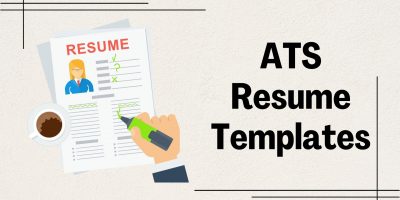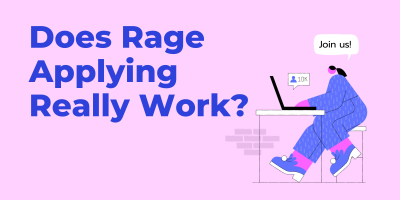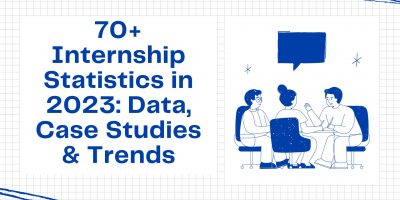
Hiring from Within: Growing Your Own Internal Talent Pool
As top talent is becoming more scarce, is hiring from within becoming a critical business objective for growth?


Head of People at PhotoAiD

Director of Marketing & Communication of Paraflare

Content Marketing Manager of Referral Rock
Finding the right candidate is a long-standing struggle made even more difficult in a booming job market and a persisting labor shortage problem. The new workplace watchword for employees is flexibility – and it encapsulates not only flexible or hybrid work models but also career mobility. Increasingly, organizations are redesigning the world of work to foster a culture of continuous learning and internal mobility that enables hiring from within.
This article weighs the two best recruitment approaches to fulfill dynamic business needs and objectives.
Filling open positions in a company from within the organization with existing employees is called internal hiring. There are several ways of hiring internally:
Internal hiring is a win-win for employees and employers alike.
The benefits of hiring internally are plentiful, as it is the most cost-effective, time-saving, and practical method. Furthermore, promoting from within requires choosing and cultivating talent, investing in employees, growing their skills, and building a shared career path.
And yet, many talent acquisition professionals overlook the one candidate pool with a tremendous potential – their own employees. Internal recruiting usually follows one or more of these approaches:
Katrina Dalao, Content Marketing Manager, shared their effective approach to recruiting at ReferralRock.
According to Katrina,

Organizations must carefully consider whether they fill vacancies with internal or external workers. One common strategy is to do internal recruitment first and conduct external recruitment only if internal efforts are unsuccessful.
To build or to buy?
A tight labor market and increasing employee expectations mean that companies can’t solely rely on buying talent externally. So, the question that many hiring managers dread is deciding what positions to fill with external or internal job candidates.
Both hiring approaches come with their own set of challenges.
Carlie Gibson shared their experience at ParaFlare on the recruiting dilemma. She stated, “Finding and retaining talent in the current market is extremely difficult, and we’ve struggled to find people with the skill level we need.
We have recently promoted several people within the organization to fill positions where we couldn’t find suitable candidates externally. This leaves a gap that needs to be filled but has been easier than recruiting experienced senior staff members.”
In many ways, organizations need to aim to recruit internally. Hiring from within the company is a sign of a successful organization recognizing and rewarding employees’ contributions.
Furthermore, externally hired workers often cost more and get significantly lower performance evaluations for the first two years than internal promotions for similar jobs. Research finds that external hires often have more education and experience and are usually paid 18% more than internal ones. Moreover, their performance is lackluster for the first two years, but they also have higher exit rates.
Despite this, there are certain situations where external recruiting is beneficial. For example, when a company is in a rut and needs fresh ideas and knowledge, an outside hire can lead to innovation and improved practices.
HR professionals can factor in these variables and decide which hiring process to adopt through detailed workforce planning and forecasting.
Typically, the hiring process goes as organizations have defined jobs and source candidates that match the required capabilities. In most scenarios, applicant tracking systems are used for sourcing candidates, which are then shortlisted and arranged for interviews. However, in a dynamic environment where objectives can change suddenly, having a talent pool that can co-evolve with organizational needs is necessary.
Today’s business world is highly competitive and ever-evolving.
The hiring space is transforming, so human resource professionals also need to adjust the recruitment process and follow recruitment trends. As a result, HR’s role moves away from administrative into a strategic partner that designs the workplace.
Undoubtedly, the key to unlocking adaptability and agility lies in fully utilizing an organization’s talent.
Building a high-performing company means creating a workforce driven to upskill, reskill and seek learning and career development opportunities. Creating a strong culture of mobility means:
Forward-thinking companies acknowledge that employee retention, recruitment, and internal mobility are all inextricably linked.
One survey found that 87% of employers agreed that a strong internal mobility program would help with retention and attraction of talent, and yet only 33% of employers had such a program.
Part of the problem is that many organizations see talent acquisition and career management as two separate channels. By integrating talent strategy with HR, organizations can reshape their workplace culture and company brand and improve the employee experience.
A mobility initiative builds more diverse capabilities within your talent pool and presents an opportunity for cross-pollination of ideas.
For any business, hiring suitable candidates is vital to the business’s success. But for smaller companies, attracting and retaining top talent can be challenging. That’s why hiring from within is especially advantageous for small businesses.
Maciej Kubiak, Head of People at PhotoAiD, shared some benefits by stating, “In our company, we have experienced internal hiring, and I have to admit that it leads to numerous benefits. If I have to choose internal or external hiring, I can say that it depends on multiple factors. However, hiring from inside our business has led to numerous advantages.
Firstly, the new hire is already an integral part of our company, so he is familiar with our culture and policy. It, of course, leads to reducing hiring time and costs. The onboarding process is shorter (but no less important) and more focused on roles and responsibilities. Moreover, changing positions and having the opportunity to grow professionally and learn new skills increase employee morale and improve talent retention.
Nevertheless, internal hiring can come with disadvantages too. For instance, hiring internal employees can shorten the talent pool, reducing different external perspectives essential for innovative and fresh ideas. Finally, an internally hired employee could have less experience in the role than an external one.”
Today we live in a hyper-dynamic era where careers are predominantly nonlinear.
In fact, according to the Bureau of Labor Statistics, the median job tenure for waged and salaried workers is 4.2 years. This figure is even lower for workers aged 25 to 34 years, only 2.8 years.
Is cultivating talent and investing in their development in this job economy simply not worth it then?
Well, consider where your company will be without your high-performers, future leaders, and critical workforce segments that drive value-creating and increase operational performance.
It shouldn’t surprise that the majority of surveyed employees (37%) seeking new employment cited the lack of career progression and challenge in their jobs as the top two factors influencing their decision. Decreased job satisfaction and a lack of career advancement opportunities drive increased turnover intentions. Simply put, when companies disregard internal talent, employees are more driven to seek opportunities elsewhere.
Employers acknowledge that workers may not dedicate their entire careers to one company. Hence, companies invest in employees’ career experiences in response to this reality. When employees are given enriching and meaningful ways to expand their capabilities, they are less likely to seek opportunities outside the organization. Rather than looking to buy leaders outside the organization, companies can now develop and identify leaders from within through various career growth experiences.
Succession planning is fairer and more reliable when leadership job positions are filled with internal talent. There is a strong business case that a company culture that discourages hiring from within fails to leverage any high potential talent they have.
To meet rapidly changing business needs, leading organizations should rethink talent models and develop open networks to attract new kinds of internal talent. As top talent is becoming more scarce, hiring from within coupled with dynamic talent allocation is becoming a critical business objective for growth.
Stave off attrition with an internal talent marketplace (Mckinsey.com)
Paying More to Get Less: The Effects of External Hiring versus Internal Mobility
Internal Marketplaces Are the Future of Talent Management (shrm.org)
Talent 2020: Surveying the Talent Paradox from the Employee Perspective
Internal Recruitment Critical to Hiring, Retention (shrm.org)
Browse our curated list of vendors to find the best solution for your needs.
Subscribe to our newsletter for the latest trends, expert tips, and workplace insights!

As top talent is becoming more scarce, is hiring from within becoming a critical business objective for growth?

From remote work integration to cutting-edge recruitment tech, explore the transformative shifts in the staffing industry.

Is rage applying just another short-lived TikTok trend or a promising employee strategy for landing a better job?

Explore valuable internship insights that offer a realistic approach to pursuing practical knowledge before employment and uncover how it gives job seekers a competitive edge in the labor market.
Used by most of the top employee benefits consultants in the US, Shortlister is where you can find, research and select HR and benefits vendors for your clients.
Shortlister helps you reach your ideal prospects. Claim your free account to control your message and receive employer, consultant and health plan leads.